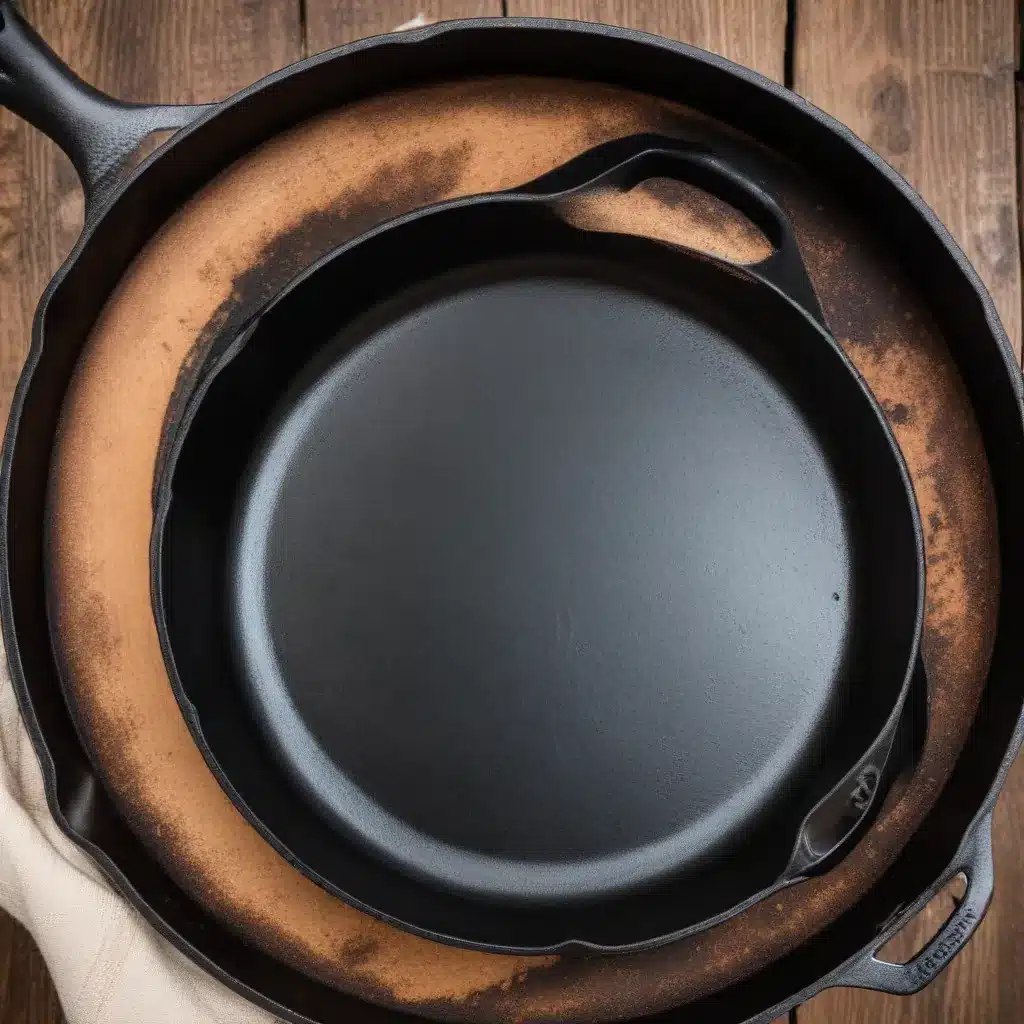
The Enduring Appeal of Cast Iron Cookware
Cast iron cookware is a beloved staple in many kitchens, cherished for its exceptional heat retention, even cooking, and remarkable longevity. Unlike other materials, cast iron improves with age, developing a natural non-stick surface known as ‘seasoning’ that not only enhances its performance but also imparts a unique, sought-after flavor to food. However, to maintain the integrity of this timeless culinary tool, proper care and maintenance are essential.
In this comprehensive guide, we’ll explore the nuances of seasoning, cleaning, and rust prevention, ensuring your cast iron skillet remains a reliable and cherished companion in your culinary adventures.
Mastering the Art of Seasoning
Seasoning is the cornerstone of cast iron cookware maintenance. It is the process of baking oil onto the cast iron, creating a protective layer that prevents rust and develops a natural non-stick surface. This seasoning process is what differentiates cast iron from other cookware, providing both functional and culinary benefits.
The Importance of Seasoning
Regular seasoning, especially after every use, is crucial for maintaining the longevity and performance of your cast iron skillet. A well-seasoned pan will have a smooth, semi-glossy, black surface, and water droplets should sizzle and glide easily across the surface. If food starts sticking or the pan appears dull or rusty, it’s time to re-season.
Step-by-Step Seasoning Guide
-
Clean the Pan: Start by thoroughly cleaning the cast iron skillet to remove any food residue or rust. Use a stiff brush or a scrub pad, avoiding abrasive materials that could damage the surface.
-
Dry the Pan: Ensure the pan is completely dry before proceeding. You can place it on the stovetop over low heat to evaporate any remaining moisture.
-
Apply Oil: Choose a high-heat, high-smoke-point oil, such as vegetable, canola, or flaxseed oil. Apply a thin, even layer of oil to the entire surface of the pan, including the sides and bottom.
-
Bake the Pan: Place the oiled pan upside down in a preheated oven at 375°F (190°C) for about an hour. This baking process will polymerize the oil, creating a durable, non-stick coating.
-
Cool and Repeat: Allow the pan to cool completely in the oven before removing it. For best results, repeat this seasoning process a few times to build up a robust, long-lasting patina.
By following this seasoning routine, you’ll ensure your cast iron skillet remains in prime condition, ready to handle a wide range of culinary tasks with ease.
Effective Cleaning Techniques
Proper cleaning is essential for maintaining the integrity of your cast iron cookware. While the process may seem straightforward, there are some nuances to consider to avoid damaging the seasoning or causing rust.
Avoid Harsh Scrubbing
Unlike other cookware materials, cast iron should not be cleaned with abrasive scouring pads or steel wool. These can strip away the precious seasoning and potentially damage the surface. Instead, use a stiff brush, a sponge, or a soft cloth to gently remove any food residue.
The Gentle Cleaning Approach
-
Rinse with Warm Water: After cooking, allow the pan to cool slightly, then rinse it with warm water. Avoid using soap, as it can strip the seasoning.
-
Scrub Lightly: If there are any stubborn food particles, use a stiff brush or a sponge to gently scrub the surface. Avoid abrasive scrubbing motions.
-
Dry Thoroughly: Ensure the pan is completely dry before storing it. You can place it on the stovetop over low heat or use a clean, dry cloth to thoroughly wipe the surface.
-
Re-season: After cleaning, it’s a good idea to re-season the pan to maintain its non-stick properties and prevent rust.
Dealing with Rust
Despite your best efforts, cast iron can sometimes develop rust. If this occurs, don’t panic – rust can be easily addressed. Start by scrubbing the affected areas with a mixture of coarse salt and water. The abrasive nature of the salt will help remove the rust without damaging the seasoning. Once the rust is gone, dry the pan thoroughly and re-season it to restore its protective coating.
Preventing Rust: Long-Term Storage Strategies
Proper storage is crucial for maintaining the longevity of your cast iron cookware and preventing rust. Here are some tips to keep your cast iron in top condition:
-
Dry Thoroughly: After cleaning, ensure the pan is completely dry before storing it. Any residual moisture can lead to rust formation.
-
Apply a Thin Layer of Oil: Coat the entire surface of the pan, including the interior and exterior, with a thin layer of high-heat, high-smoke-point oil, such as vegetable or canola oil. This creates a protective barrier against moisture and rust.
-
Store in a Dry Place: Keep your cast iron skillet in a cool, dry place, away from high humidity or moisture. Avoid stacking other items on top of it, as this can cause scratches or chips in the seasoning.
-
Consider Covering the Rim: If you notice the rim of your cast iron pan starting to rust, you can apply a thin layer of oil or beeswax to the exposed areas to create a barrier against moisture.
By following these storage best practices, you’ll ensure your cast iron skillet remains in pristine condition, ready to tackle your culinary adventures for years to come.
Preserving the Integrity: Avoiding Pitfalls
While cast iron cookware is remarkably durable, there are a few common pitfalls to be aware of to maintain its integrity and performance.
Temperature Extremes
Sudden temperature changes can be detrimental to cast iron. Avoid plunging a hot pan into cold water, as this can cause the enamel to crack or the seasoning to deteriorate. Instead, allow the pan to cool naturally on the stovetop or in the oven before cleaning.
Abrasive Scrubbing and Cleaning Agents
As mentioned earlier, harsh scrubbing with abrasive materials can damage the seasoning and the surface of the cast iron. Similarly, harsh cleaning agents, such as bleach, can dull the shine and weaken the enamel over time. Stick to gentle, non-abrasive methods for optimal results.
Protecting the Surface
To prevent damage to the surface, avoid cutting or slicing directly on the cast iron. Instead, use wooden or silicone utensils to protect the seasoning and minimize the risk of scratches or chips.
By being mindful of these potential pitfalls, you can ensure your cast iron skillet remains in top condition, ready to serve you for years to come.
Elevating Your Cooking with Cast Iron Cookware
With its exceptional heat retention, even cooking, and unique flavor-enhancing properties, cast iron cookware is a versatile and indispensable tool in any culinary enthusiast’s arsenal. By mastering the art of seasoning, cleaning, and rust prevention, you can unlock the full potential of your cast iron skillet and enjoy the countless benefits it offers.
Remember, caring for your cast iron is an investment in your culinary journey. By following the tips and techniques outlined in this guide, you’ll be well on your way to preserving the integrity of your cast iron cookware and elevating your cooking experiences for years to come.
For more information on Kitchen Warrior’s premium kitchen essentials and culinary resources, be sure to explore our website. Happy cooking!


